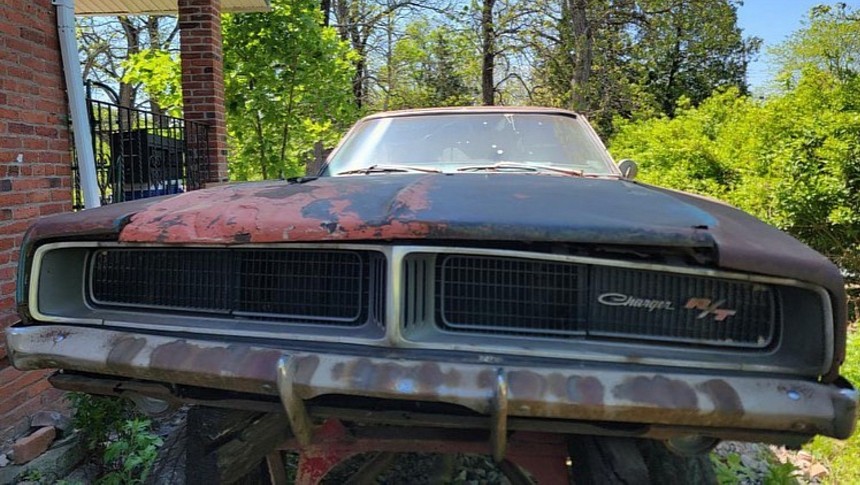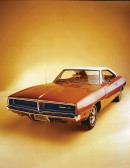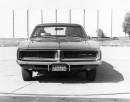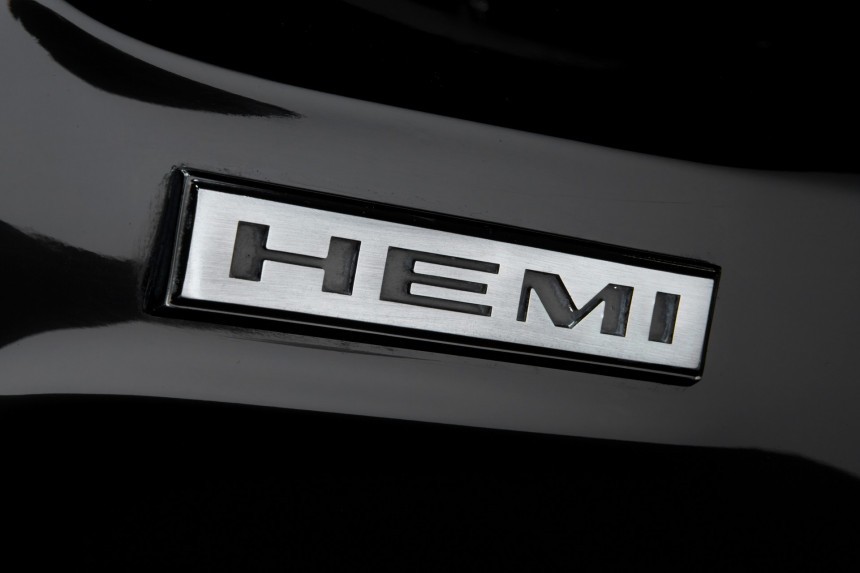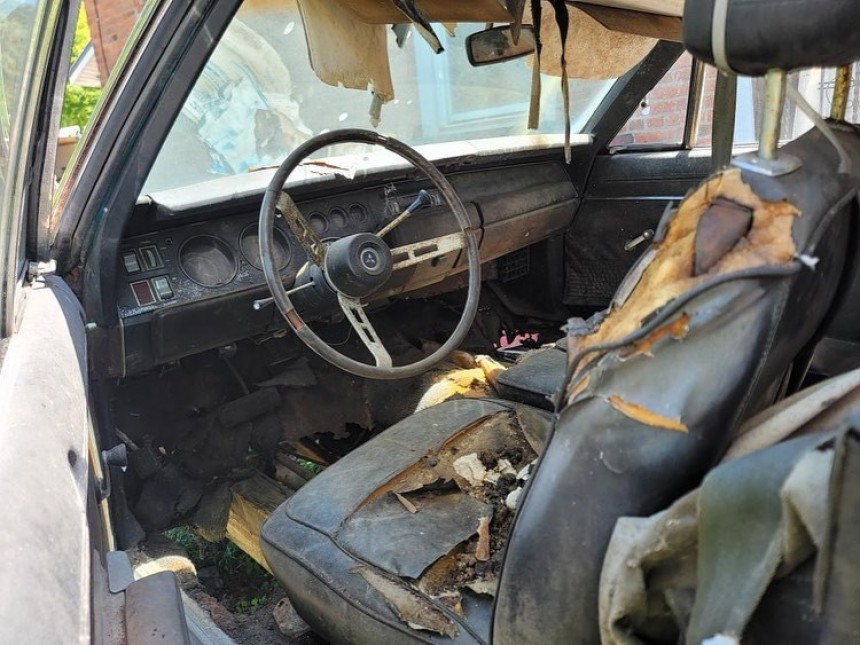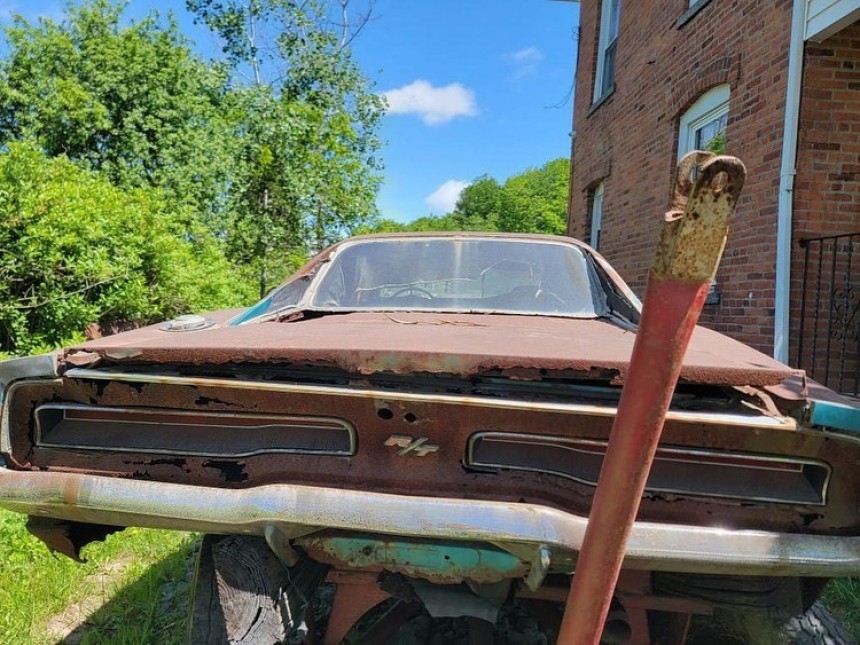The Charger came across as Dodge’s first production high-speed fastback street racer in an attempt to muscle in on the Mustang’s sales success for the sloped-back sporty design. The first generation of the new Mopar wasn’t exactly a financial exhilaration. The model was restyled entirely after just two years (1966-1967).
Dodge’s most apt engineers and designers were tasked with creating a performance two-door muscle that could take on the high banks of Daytona and then drive home without second thoughts. Aerodynamics wasn’t yet a significant concern for Detroit. Still, it was becoming clear that sleek looks were catching on with buyers, and the second-generation Charger capitalized on this aspect.
The Coke bottle profile introduced in 1968 was an immediate hit – the B-Body Mopar soared almost six times in the sales charts compared to the previous year (92,590 over 15,788 units). Chrysler’s white collars rubbed their hands and carried on, with only minor modifications for the 1969 model.
Visually, the front grille received a vertical split, and the round double rear taillights were ditched in favor of wide rectangular lamps. Mechanically, the Charger got the R/T treatment, a high-performance package with two big-block offerings. The standard plant was the 440 four-barrel, while the top choice consisted of Chrysler’s signature V8, the 426 HEMI.
The new design’s muscular bulges over the wheel wells emphasized the mean character of the coupe. Also, the big screen helped cement the Charger’s fame as the bad boy of Detroit. Frank Bullitt totaled his famous Mustang in a high-speed chase with a sinister black Charger R/T that spawned a motion-picture craze for piston adrenaline.
The moonshine-running Duke cousins used a ’69 to play their long-jump antics in the notorious General Lee Dodge. That movie series made the 1969 Dodge a superstar, and examples of that model year are among the most coveted Chargers on the market (not considering the rarities like the Daytona or the 500).
Ranking just behind these two unicornian collectibles, the R/T is also a sought-after classic from the muscle car era. But here’s where things get out of hand: while a good-looking, mechanically-sound Charger R/T deserves – and more often than not fully receives – a buyer’s attention, some situations leave one speechless.
Like the car in this article – advertised for sale near Albany, New York. The seller states the car is “about 100% complete other than what has rusted away.” I know for a fact – and science can back me up on this – that percentage is the same in metric and imperial units. And I have my doubts regarding the completeness of this car.
The state of it is not an eye-catching detail, but the asking price of $15,000 is. Granted, for that money, a buyer (with deep pockets and a taste for adventure) gets the 440-cube V8 (the standard offer for the Road/Track trim) with an automatic three-speed.
Allegedly, the 7.2-liter four-barrel engine is a match (made in numbers) for the tranny and rear-end (the 8.75-inch one). When it came out of the assembly plant, this Charger R/T had turquoise paint, disc brakes, and a buddy seat. The other options could be deduced from the fender tag if that was still readable. However, the rust consumed some of it – just like it did with the rest of the car.
In a photographic evidence-sustained session of honesty, the seller says the car will need “mostly everything.” That would include prayers, hopes, money, time, patience, and probably the accompanying “better 1969 shell that can go with it.”
The R/T currently sits on a hay wagon – and moving it off the horse-feed carriage might not be a great pick-up idea, given its state. It’s a long, long way from the mighty General Lee to this pile of rust and dust; one could say this is General Lee right after the 1863 Battle of Gettysburg (when the tides of the Civil War turned decisively against the Confederates).
The 1969 Dodge Charger R/T saw a 19,298-unit production run (some sources are more generous, citing just over 20,000 cars), with the overwhelming majority being powered by the 400-CID engine. Just 432 HEMIs were installed between the front wheels of this Mopar icon (as a $648.20 option), leaving the big 7.2-liter Magnum to account for the bulk of the sales.
In ’69, buying 375 hp and 480 lb-ft (380 PS / 651 Nm) of Dodge Road/Track high-performance was a $3,575 investment (before other extras were added). Harking at the Bullitt and Dukes of Hazzard legacy, a standard R/T was a high 13s quarter-miler (a period test revealed 13.89 seconds at 102.2 mph trap speed).
As for this derelict pile of metal oxidation, there’s no telling what it may become of it should someone meet the seller’s demands. But, for the amount requested, there are other options – that not only have a more optimistic demeanor but are also eligible for a drive straight away. Then again, if a Mopar fanatic decides this Charger deserves a second chance – as a functional vehicle, not as a parts donor - it will take a serious investment to get it back on (Road/)Track.
The Coke bottle profile introduced in 1968 was an immediate hit – the B-Body Mopar soared almost six times in the sales charts compared to the previous year (92,590 over 15,788 units). Chrysler’s white collars rubbed their hands and carried on, with only minor modifications for the 1969 model.
Visually, the front grille received a vertical split, and the round double rear taillights were ditched in favor of wide rectangular lamps. Mechanically, the Charger got the R/T treatment, a high-performance package with two big-block offerings. The standard plant was the 440 four-barrel, while the top choice consisted of Chrysler’s signature V8, the 426 HEMI.
The moonshine-running Duke cousins used a ’69 to play their long-jump antics in the notorious General Lee Dodge. That movie series made the 1969 Dodge a superstar, and examples of that model year are among the most coveted Chargers on the market (not considering the rarities like the Daytona or the 500).
Ranking just behind these two unicornian collectibles, the R/T is also a sought-after classic from the muscle car era. But here’s where things get out of hand: while a good-looking, mechanically-sound Charger R/T deserves – and more often than not fully receives – a buyer’s attention, some situations leave one speechless.
The state of it is not an eye-catching detail, but the asking price of $15,000 is. Granted, for that money, a buyer (with deep pockets and a taste for adventure) gets the 440-cube V8 (the standard offer for the Road/Track trim) with an automatic three-speed.
Allegedly, the 7.2-liter four-barrel engine is a match (made in numbers) for the tranny and rear-end (the 8.75-inch one). When it came out of the assembly plant, this Charger R/T had turquoise paint, disc brakes, and a buddy seat. The other options could be deduced from the fender tag if that was still readable. However, the rust consumed some of it – just like it did with the rest of the car.
The R/T currently sits on a hay wagon – and moving it off the horse-feed carriage might not be a great pick-up idea, given its state. It’s a long, long way from the mighty General Lee to this pile of rust and dust; one could say this is General Lee right after the 1863 Battle of Gettysburg (when the tides of the Civil War turned decisively against the Confederates).
The 1969 Dodge Charger R/T saw a 19,298-unit production run (some sources are more generous, citing just over 20,000 cars), with the overwhelming majority being powered by the 400-CID engine. Just 432 HEMIs were installed between the front wheels of this Mopar icon (as a $648.20 option), leaving the big 7.2-liter Magnum to account for the bulk of the sales.
As for this derelict pile of metal oxidation, there’s no telling what it may become of it should someone meet the seller’s demands. But, for the amount requested, there are other options – that not only have a more optimistic demeanor but are also eligible for a drive straight away. Then again, if a Mopar fanatic decides this Charger deserves a second chance – as a functional vehicle, not as a parts donor - it will take a serious investment to get it back on (Road/)Track.
